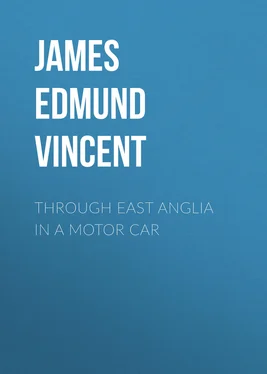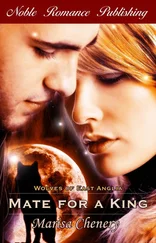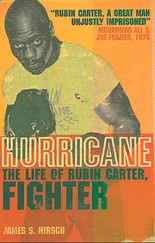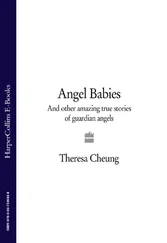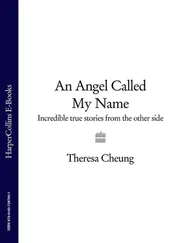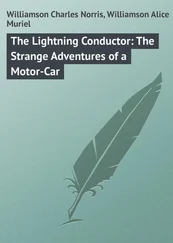James Vincent - Through East Anglia in a Motor Car
Здесь есть возможность читать онлайн «James Vincent - Through East Anglia in a Motor Car» — ознакомительный отрывок электронной книги совершенно бесплатно, а после прочтения отрывка купить полную версию. В некоторых случаях можно слушать аудио, скачать через торрент в формате fb2 и присутствует краткое содержание. Жанр: Путешествия и география, foreign_antique, foreign_prose, на английском языке. Описание произведения, (предисловие) а так же отзывы посетителей доступны на портале библиотеки ЛибКат.
- Название:Through East Anglia in a Motor Car
- Автор:
- Жанр:
- Год:неизвестен
- ISBN:нет данных
- Рейтинг книги:3 / 5. Голосов: 1
-
Избранное:Добавить в избранное
- Отзывы:
-
Ваша оценка:
- 60
- 1
- 2
- 3
- 4
- 5
Through East Anglia in a Motor Car: краткое содержание, описание и аннотация
Предлагаем к чтению аннотацию, описание, краткое содержание или предисловие (зависит от того, что написал сам автор книги «Through East Anglia in a Motor Car»). Если вы не нашли необходимую информацию о книге — напишите в комментариях, мы постараемся отыскать её.
Through East Anglia in a Motor Car — читать онлайн ознакомительный отрывок
Ниже представлен текст книги, разбитый по страницам. Система сохранения места последней прочитанной страницы, позволяет с удобством читать онлайн бесплатно книгу «Through East Anglia in a Motor Car», без необходимости каждый раз заново искать на чём Вы остановились. Поставьте закладку, и сможете в любой момент перейти на страницу, на которой закончили чтение.
Интервал:
Закладка:
At Royston we found an ancient and interesting inn, actually bisected by the ancient boundary line of Hertfordshire and Cambridgeshire, a kindly welcome, most benign bulldogs, and last, but by no means least, a glorious pie. The inn is there still no doubt; so probably are the bulldogs; so no doubt is the kindly welcome; but the pie vanished in a manner almost miraculous. It came in an ample dish, steaming, succulent, the crust browned to a nicety. In a surprisingly short time the dish went out, empty, almost clean as Jack Sprat's and his spouse's platter, and its exit was accomplished by a gurgle of suppressed laughter from without. Was there something of a rueful tone in that laughter? Perhaps there was. He who would feed after March motorists have eaten their fill had best send in to them a gigantic pasty, else will he go hungry.
At Royston, the gate of East Anglia, we strolled about a little, finding it to be just a quiet town of the country—there is no sufficient reason to believe it to be really ancient according to the standard of antiquity in these islands—and the intersecting point of two great roads, that followed by us, which went on to the eastward, and the road between Hertford and Cambridge. Here, according to the antiquaries of yesterday, Icenhilde Way and Erming Street crossed one another. The antiquaries of to-day question the Icenhilde Way so far east as this, laugh at the philology which would make Ickleton evidence of its existence, and make nothing of the authority of the learned Dr. Guest. Perhaps they would treat with more respect Erming Street, said to have led from Royston to Huntingdon, and to cross the Ouse at Arrington, for there appears to be sound evidence that Edgar granted to the monks of Ely the Earmingaford, or ford of the Earmings, or fenmen. Walking eastward along the spacious street we found first the turning for Newmarket, which was of present interest, and, quite by accident, a notice "To the cave," leading us into a back yard and to a locked gate, and provoking a little later research. We couldn't get in, of course. The custodian, if there be one, was at his sacred dinner, as everybody in Royston seemed to be; but Royston struck us as the kind of place in which an obsolete notice might hang unmoved so long as the fibre of wood would support its covering of paint. Investigation in books showed the "cave" to have been discovered by a fluke in 1472, but the "cave," like a good many others here and elsewhere, seems to have been merely an ancient boneshaft or rubbish pit, afterwards excavated sufficiently to be used as a subterranean chapel. Hence the sketches of saints carved on the chalk walls which, candidly, I should like to have seen close at hand.
Royston is quiet enough in all conscience now, and it is doubtful whether the motor-car, rapidly as it increases in the land, will bring much prosperity to it, although it is placed at important cross-roads. Cambridge is but 12-1/2 miles distant, and Cambridge is a good deal more interesting than Royston, as well as a more certain find for refreshment, for pies may not always be to the fore. Being at the cross-roads, however, Royston is likely to see as much life passing through its midst and to like it as little as it did in the days of James I. Nay, it may even like the bustle less, for more dust will go with it. James, who really was an ardent, if not a mighty, hunter, planted a hunting-box near Royston, his particular object being probably to course the Chiltern hares—for this is a first-rate coursing country, possessed, as is most down-land, of remarkably stout hares; and, when hares are stout, the open prospect of the downs makes coursing a very pretty sport. Deer, of course, there may have been; but the country does not look like them; and as for the fox, of whom the moderns have written and sung, "Although we would kill him we love him," he was vermin in the days of King James. To hunt the hare either with greyhound or harier, on the other hand, was a sport much loved of our kings even in Saxon times, and in Downland of Berkshire, not dissimilar to the Chilterns, there are examples of manors held on the condition that the tenant should keep a pack of hariers for the king's hunting. Whether the Royston folk had to keep hounds for the king is not clear, but "Murray" has unearthed a lovely story of their catching his favourite hound and attaching to his collar a scroll bearing the words "Good Mr. Jowler, we pray you speak to the king, for he hears you every day and so doth he not us, that it will please his Majesty to go back to London, for else the country will be undone; all our provision is spent already, and we are not able to entertain him longer." Here was a new way of conveying a broad hint. "Baby Charles" visited Royston twice, immediately before his standard was raised at Nottingham, and later as a prisoner.
The distinguishing feature of the road from Royston to Newmarket, which crosses over the south-eastern end of the Gog Magog Hills, is its undeviating straightness. It is plain from the map that it curves gently here and there, having indeed almost a sharp turn to the left before it ascends the Gog Magog Hills—which would be of little account as hills elsewhere than near a fenny country—but the general impression left was of wide prospects, Scotch firs, belts planted for partridge driving, and abundant game birds. The feeling that this is an ideal shooting country, and not half a bad one for motoring, was at its strongest when Six-Mile Bottom, famous in the history of sport with the gun, was reached. It was a day, as luck would have it, on which a bird-lover could take rapid observations of bird-life as he swept along, for there were no vehicles to distract him on the empty road, and there was no chance of his coming upon them unawares. Partridges we saw galore, cock-pheasants strutting on the ploughland, confident that they were safe from the gun by law till the next October, and probably knowing quite well—for there are few things a wily old cock-pheasant does not know—that there would be no serious danger, away from boundary hedges, until the leaf was clear in November. Less handsome than the cock-pheasants, but more interesting, because less familiar to my eyes, were the hooded crows, in their sober suits of drab-grey and glossy black, walking about in perfect amity with the pheasants. This bird is a grey mystery. In shape and dimensions he is identical with the carrion crow; carrion crows and hoodies (or Royston crows) will interbreed on occasion; their nests and eggs are of identical situation, structure, colour, and shape. Their common habits include a partiality for young birds and young rabbits as well as for carrion—I have heard a rabbit scream, looked in the direction of the noise, shot a carrion crow which rose, and found it lying within a couple of yards of a half-grown rabbit, quite warm, and with its skull split—and yet nobody knows for certain whether the two species are distinct or not. The black crows may be migrants; the grey crows certainly are. They come over to the East Coast in hordes in the autumn, mostly from Russia, where they also interbreed with the carrion crow. They come inland a little, and I have seen one or two in Berkshire, but west of Berkshire they are certainly very exceptional in England and Wales, though they are quite common and even breed in Scotland and Ireland. In fact, they are birds, of whom one would like to know more, attired in a Quakerish habit according ill with their disposition. Still, when you have no game coverts of your own in the vicinity, it is good to see them circling about over these wide spaces near Royston, and to remember that they used to be called Royston crows. The marshmen call them Danish crows also, and it is a great pity when ornithologists omit to specify these local names of birds. Hoodie, Danish crow, Royston crow are identical, and each of them at least as interesting as Corone cornix . They are all, as Mr. Rowdler Sharpe says, ravens in miniature, but it is open to doubt whether, as pets, they would be equally amusing in their tricks. We saw them in great numbers as we swept along, and, like many wild things, they took no notice of the car. It is strictly irrelevant, of course, but it may be interesting to say that, since these words were written, I have found that even a Highland stag is not afraid of a motor-car, which shows a Highland stag to have far more sense than some reasoning men.
Читать дальшеИнтервал:
Закладка:
Похожие книги на «Through East Anglia in a Motor Car»
Представляем Вашему вниманию похожие книги на «Through East Anglia in a Motor Car» списком для выбора. Мы отобрали схожую по названию и смыслу литературу в надежде предоставить читателям больше вариантов отыскать новые, интересные, ещё непрочитанные произведения.
Обсуждение, отзывы о книге «Through East Anglia in a Motor Car» и просто собственные мнения читателей. Оставьте ваши комментарии, напишите, что Вы думаете о произведении, его смысле или главных героях. Укажите что конкретно понравилось, а что нет, и почему Вы так считаете.
